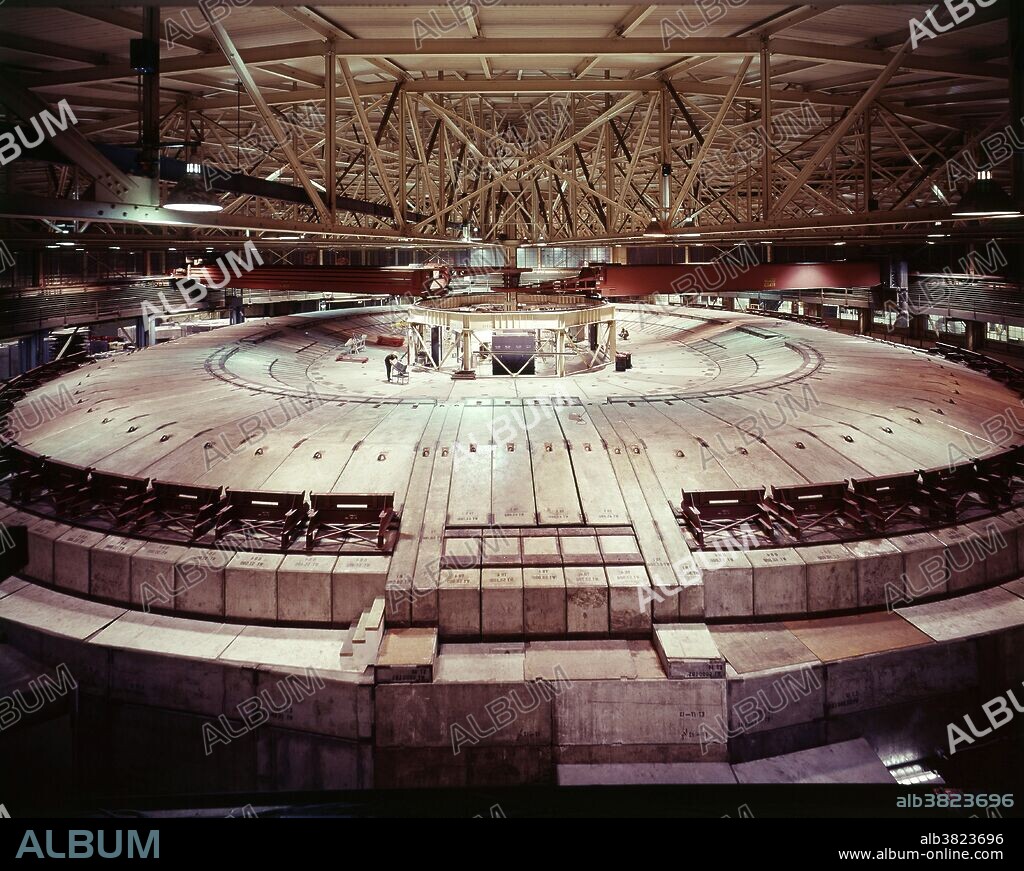alb3823696
Bevatron Particle Accelerator, 1960s

|
Add to another lightbox |
|
Add to another lightbox |



Buy this image.
Select the use:

Title:
Bevatron Particle Accelerator, 1960s
Caption:
The Bevatron was a particle accelerator at Lawrence Berkeley National Laboratory in California, which began operating in 1954. It was designed to accelerate protons to sufficient energy to create antiprotons, and verify the particle-antiparticle symmetry of nature, then only theorized. The antiproton was discovered there in 1955, resulting in the 1959 Nobel Prize in physics for Emilio Segrè and Owen Chamberlain. The Bevatron received a new lease on life in 1971, when it was joined to the SuperHILAC linear accelerator as an injector for heavy ions. The combination was conceived by Albert Ghiorso, who named it the Bevalac. It could accelerate any nuclei in the periodic table to relativistic energies. It was finally decommissioned in 1993.
Credit:
Album / Science Source / Jon Brenneis
Releases:
Model: No - Property: No
Rights questions?
Rights questions?
Image size:
4678 x 3737 px | 50.0 MB
Print size:
39.6 x 31.6 cm | 15.6 x 12.5 in (300 dpi)
Keywords:
1900S • 1950S • 1960'S • 1960S • 1990S • 20 20TH XX XXTH TWENTIETH CENTURY • 20 XX TWENTIETH CENTURY • 20TH CENTURY • 20TH • 60 60'S DECADE SIXTY YEARS • 60 60'S DECADE YEARS SIXTY SIXTIES • 60'S • 60S • 90S • AMERICA • AMERICAN • ANTIPROTON DISCOVERY • BEVALAC • BEVATRON • BEVETRON • BIG ATOM SMASHER • CALIFORNIA • HEAVY ION INJECTOR • HISTORIC • HISTORICAL • HISTORY • LAWRENCE BERKELEY NATIONAL LABORATORY • MALE • MAN • MEN • NINETIES • NINETIES, THE • NINETY DECADE • PARTICLE ACCELERATOR • PEOPLE • PERSON • PHYSICS • PROTON ACCELERATOR • SIXTIES • SIXTIES, THE • SUPERHILAC LINEAR ACCELERATOR • TWENTIETH CENTURY • UC BERKELEY • UNITED STATES • US • USA • YEARS DECADE'S SIXTY SIXTIES 60 60 1960
 Pinterest
Pinterest Twitter
Twitter Facebook
Facebook Copy link
Copy link Email
Email
